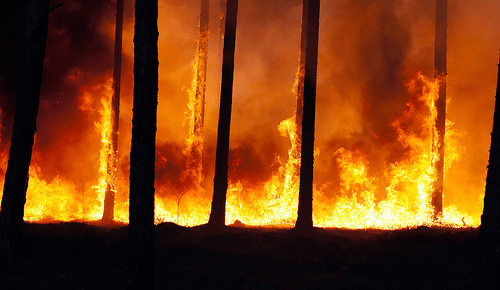In a new study recently published on Natural Hazards a team of scientists (among them the CMCC researcher Michele Salis and Donatella Spano from IAFENT Division) evaluated the spatiotemporal changes in wildfire regime and exposure in a fire-prone Mediterranean area (Sardinia, Italy) in relation to changes in ignition patterns, weather conditions, suppression activities, and land uses.
Results provided a robust approach to understanding the spatiotemporal dynamics of wildfire risk on the island while highlighting: a decrease in burned areas (60,000–20,000 ha/year) and ignitions (3,700 – 2,600 fires/year); an advance of 15 days for the fire season peak; an increase in spring temperatures and in fire exposure for WUI (Wildland-Urban Interface) areas.
Most likely the reduction in fire activity may be due to a combination of social factors and suppression capabilities. On the other hand, simulation modeling suggested pockets of high wildfire exposure in specific places.
The abstract of the paper:
We evaluated the spatiotemporal changes in wildfire regime and exposure in a fire-prone Mediterranean area (Sardinia, Italy) in relation to changes in ignition patterns, weather, suppression activities, and land uses. We also used wildfire simulations to identify fine-scale changes in wildfire exposure of important features on the island. Sardinia experienced a sharp reduction in fire number and area burned between the periods 1980–1994 and 1995–2009. Despite this decrease, losses and fatalities from wildfires continue. This suggests that localized areas and seasons of high wildfire risk persist on the island. Our analysis showed (1) a reduction in area burned (60,000–20,000 ha/year) and ignitions (3,700–2,600 fires/year), (2) an advance of 15 days for the fire season peak, (3) an increase in spring temperatures, and (4) an increase in fire exposure for WUI areas. Little change was noted for land use types and associated fuels. Most likely the reduction in fire activity may be due to a combination of social factors and suppression capabilities. On the other hand, simulation modeling suggested pockets of high wildfire exposure in specific places. The combined empirical analyses and simulation modeling provided a robust approach to understanding the spatiotemporal dynamics of wildfire risk on the island.
Read the integral version of the paper:
Salis M., Ager A. A. , Finney M. A. , Arca B., Spano D.
Analyzing spatiotemporal changes in wildfire regime and exposure across a Mediterranean fire-prone area
2013, Natural Hazards, DOI: 10.1007/s11069-013-0951-0




